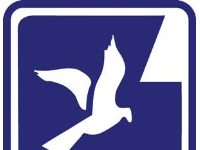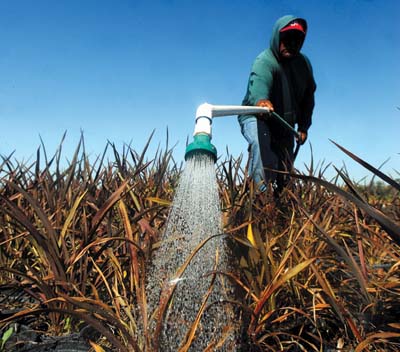
Volunteers share stories, advice for future emergencies
Six months after Hurricane Katrina and Rita ravaged the Gulf
Coast states, many locals who volunteered are still haunted by the
sights, sounds and smells of the disaster.
The Morgan Hill Office of Emergency Services (OES) and the local
Community Emergency Response Team (CERT) met with eight volunteers
last week about how their experience with the Katrina tragedy can
help prepare the local region to handle emergencies.
Volunteers share stories, advice for future emergencies
Six months after Hurricane Katrina and Rita ravaged the Gulf Coast states, many locals who volunteered are still haunted by the sights, sounds and smells of the disaster.
The Morgan Hill Office of Emergency Services (OES) and the local Community Emergency Response Team (CERT) met with eight volunteers last week about how their experience with the Katrina tragedy can help prepare the local region to handle emergencies.
Ken Foot, the emergency services coordinator for Morgan Hill, and Deborah Suzuki, the local CERT coordinator, moderated the question-and-answer session with the panelists.
As some of the volunteers shared their stories, their voices shook and their eyes teared up. They passed Kleenex down the row as they each shared their reasons for going to the disaster area and how they helped.
One point many of the panelists made is that a disaster can be a variety of occurrences, from a flu pandemic or an earthquake to a flood or a hazardous material spill.
Captain Kelly Seitz, a member of the Santa Clara Fire Department who deployed to Louisiana as part of a Federal Emergency Management Agency task force, said one of the phrases that has been tossed around in regards to the September 11 terrorists attacks and the hurricane is “a failure to imagine.”
“This applies to disasters, too,” Seitz said. “Nothing is more important than getting prepared. We need to do it now and make it institutionalized.”
He equated mandating emergency preparedness kits to laws that require people to use safety belts when driving or to have smoke detectors in their homes.
“We are working at the state and regional levels to make this happen,” Seitz said. “I don’t like it when people say you can’t do it.”
Like Seitz, many of the volunteers regarded personal disaster preparation as a key to weathering a disaster of any kind.
“People need to be self-sustaining for a minimum of 72 hours,” said Jan Masuda, a volunteer with the American Red Cross. “The Red Cross takes 48 hours to get into the area and survey it.”
She headed to the Miami region 48 hours after Hurricane Katrina hit the state. While the area was not leveled, Masuda said many people had chosen not to evacuate and had no electricity and few other supplies.
“You have no gasoline to get to work, no electricity,” Masuda said. “No income for weeks.”
Masuda and another volunteer, Aggie Ternasky, emphasized the importance of being prepared for an extended period of isolation if a flu pandemic were to hit.
“Families need to be financially able and have provisions on hand for 30 days,” Masuda said. “When you go to the grocery store, buy one thing and tuck it away. Take $5 and tuck it away.”
Ternasky, who volunteered with the American Red Cross infirmary and works as a public health nurse, said the panelists were not trying to spread panic, but want people to be prepared if a pandemic or other disaster hits.
“It’s a very high probability that we could go into isolation or quarantine,” Ternasky said. “Its very realistic that schools and grocery stores could be closed.”
While the theme for the evening seemed to be personal preparation, some of the panelists had other advice for Foot and Suzuki.
Kevin Sankey, a member of the National Disaster Medical Systems, who deployed to the Superdome, brought up the issue of communication in the Gulf Coast.
“The only thing that would work was text messages on cell phones,” Sankey said.
His team used Nextel phones. Other volunteers said text messages did not work for them. Sankey urged Foot to consider the communication technology Morgan Hill would need during a disaster. In response to a question from an audience member, Sankey said the NDMS was not allowed to use ham radios for communication because the channels are not secured.
Another volunteer, Christine Russell, of San Juan Bautista, suggested that the city consider evacuation plans that allow residents to bring their pets with them. Russell, who works with local animal rescue Pet Friends, volunteered in east Texas at an evacuee camp where people were allowed to bring their animals.
“Stores and independent people donated food and supplies,” Russell said.
Since the hurricanes hit, the Pets Evacuation and Transportation Act has been submitted to the United States Congress. If passed, the bill would require state and local evacuation plans to accommodate household pets and service animals in an emergency. The House Transportation subcommittee on Economic Development, Public Buildings and Emergency Management is reviewing the bill.
Russell pointed out the difficulty some volunteers found in offering their services. She spent weeks trying to find an organization working with animals in the area, including calls to the American Society for the Prevention of Cruelty to Animals, before she finally went to Texas on her own to volunteer.
“There needed to be a lot more glue matching up the volunteers with the groups,” she said.
Foot is working with other emergency service offices and nonprofit organizations in Santa Clara County to address the issue of placing volunteers.
“Agreements are being written,” Foot said. “People will hear over the radio where to volunteer and they will be able to come in and state their qualifications to be assigned a job.”
The effort is part of a Santa Clara County pilot program that is preparing to make better use of volunteers in an emergency. Morgan Hill is the South County intake location.
“We are looking at a precise way of bringing spontaneous volunteers into an emergency,” Foot said.
Foot and Suzuki have planned monthly meetings for current CERT members that will include drills and exercises to prepare them to respond in a disaster.
For more information on the local CERT team, call 408-779-1722 or e-mail
ke******@mo********.gov
or
de***********@ya***.com
. For more information on family disaster preparedness, visit www.redcross.org and click on “Get Prepared.”








